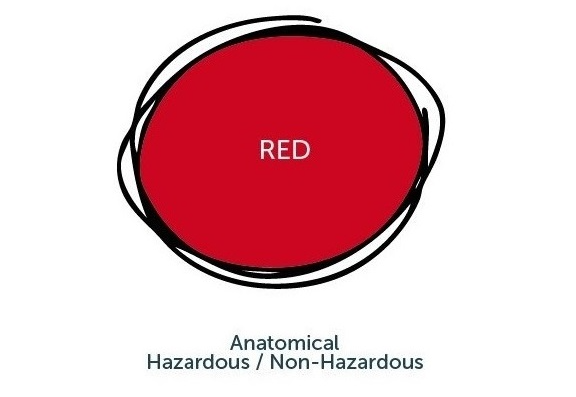
23
Aug
2016
Next in Initial Medical’s “Follow the Colour Code” blog series, we’re seeing red…
One of the warmest colours, red signifies passion and lust, violence, revenge, danger and anger. It exudes a strong and powerful energy, often associated with our most physical needs and our will to survive. As such, it is believed to provoke lively reaction, leadership and ambition, driving enthusiasm, determination and excitement.
Found in the natural world usually in the form of fruit, vegetables, flowers or blood, red is thought to be the first colour babies see and is always present in our day-to-day lives. It is widely used in restaurants to stimulate hunger; used on road signs to give a warning or instruction; it is the colour of traditional phone boxes and post boxes; and a symbolic colour for London buses. Red is also thought to be one of the most common favourite colours around the globe, and approximately 77% of all national flags include the colour as well.
Around the world, red has both positive and negative connotations. In Asian cultures, it represents good luck, joy, prosperity, celebration, happiness and long life. In countries such as India, red is associated with purity and spirituality, and it tends to be the colour brides wear on their wedding day. In Iran, red is connected with good fortune and courage, while it is also considered lucky in Egypt. Conversely, some countries in Africa associate red with death and it symbolises aggression in Nigeria. Going even further afield, we have the red planet and red giant stars.

In the cosmetic and healthcare industry, red is the assigned colour for anatomical waste.
As part of the clinical waste colour coding system set out by the Department of Health, red is among the eight colours used to help segregate and dispose of waste effectively and safely.
Anatomical waste might be hazardous or non-hazardous, and includes any waste generated from the body. This might include:
Mostly relevant to those providing surgical cosmetic treatments and procedures, all anatomical waste should be placed into a yellow, rigid and leak-proof container with a red lid.
The container should be be clearly marked as ‘anatomical waste – for incineration ONLY’ and should display the theatre name or site number and date for easy identification. Different sized bins are available depending on the volume of red waste being generated, with the leading products designed to help prevent spillages and unpleasant odours.

For service technicians at Initial Medical, their job is as much about providing outstanding customer service as it is helping their clients stay compliant and safe, and they are there to answer any questions a customer might have.
Once collected, all waste is then transferred back to the warehouse in an appropriately equipped vehicle. To meet the ADR requirements for the transportation of clinical and anatomical waste streams, the vehicle is required to carry items such as a fire extinguisher, specialist spill kits and protective clothing. All vehicles carrying clinical waste must show orange plates on the front, rear and sides, so the emergency services could quickly identify the contents, in the unlikely event of the vehicle being involved in an accident.
The waste is later collected by the company’s disposal contractor, who then transports and disposes of the waste in the appropriate way.
Hey, wait!
Before you go.....
Let's stay in touch, pop your details here and we'll send our editor's hand-picked updates on your fave subjects.